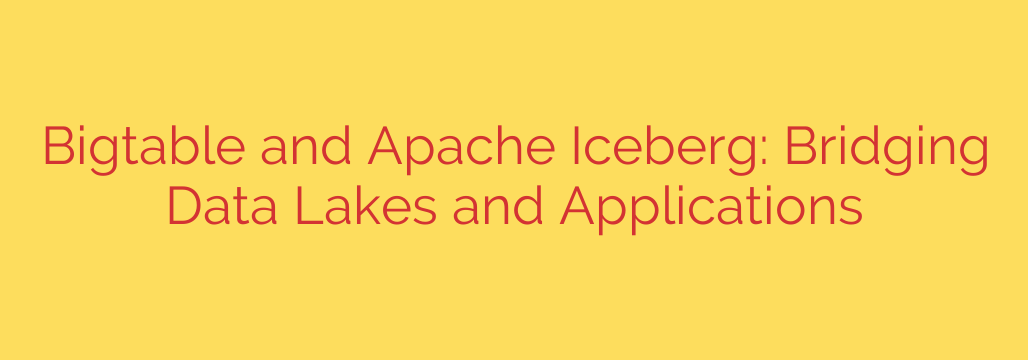
Bridging the Gap Between Large-Scale Analytics and Real-Time Applications
In today’s data-driven world, organizations often grapple with a fundamental challenge: how to effectively connect vast stores of analytical data, typically residing in data lakes, with the demanding, low-latency needs of operational applications. Data lakes, often built on cost-effective object storage and managed by formats like Apache Iceberg, are perfect for large-scale processing, historical analysis, and data science. However, directly querying these for split-second responses required by user-facing applications or operational systems can be inefficient or impossible.
This is where high-performance operational databases come into play. Systems designed for low latency reads and writes and high throughput, such as Bigtable, are essential for powering applications like IoT platforms, time-series data analysis, user profile management, financial dashboards, and real-time recommendations. These applications need immediate access to specific data points.
The critical question becomes: how do you make the rich data in your data lake accessible to these operational applications without creating complex, fragile, or inconsistent data silos? The synergy between a data lake table format like Apache Iceberg and an operational database like Bigtable offers a powerful solution.
Apache Iceberg provides structure and reliability to your data lake. It manages data stored on object storage (like S3, GCS, ADLS), offering features like schema evolution, hidden partitioning, and time travel. This makes the data lake a reliable source for analytics and bulk data processing.
Bigtable, on the other hand, is optimized for massive operational datasets with extremely high read/write rates. Its architecture is ideal for key-value or wide-column data models, delivering the consistent, sub-10ms latency required for real-time interactions.
Integrating these technologies allows you to bridge the gap. Data processed, transformed, or enriched in the data lake using analytical engines that understand Apache Iceberg can be efficiently moved or synchronized into Bigtable. This makes the results of complex analytics or large datasets instantly available to operational applications. Conversely, operational data captured in Bigtable can be exported and landed in the data lake under Apache Iceberg‘s management for long-term storage and deeper analysis.
This pattern creates a cohesive data architecture. Key benefits include:
- Improved Data Consistency: Ensuring data used by applications aligns with analytical insights from the data lake.
- Simplified Data Pipelines: Creating more robust and maintainable flows between analytical and operational systems.
- Reduced Data Silos: Breaking down barriers between different types of data processing.
- Faster Time-to-Insight: Operationalizing insights derived from the data lake much more quickly.
- Unlocking New Use Cases: Enabling applications that require both historical context from the data lake and real-time access from an operational database.
By strategically leveraging Apache Iceberg for the data lake and Bigtable for operational workloads, organizations can build sophisticated data platforms that effectively serve both analytical needs and demanding real-time applications, driving greater value from their data assets.
Source: https://cloud.google.com/blog/products/databases/bigtable-spark-connector-now-ga/








